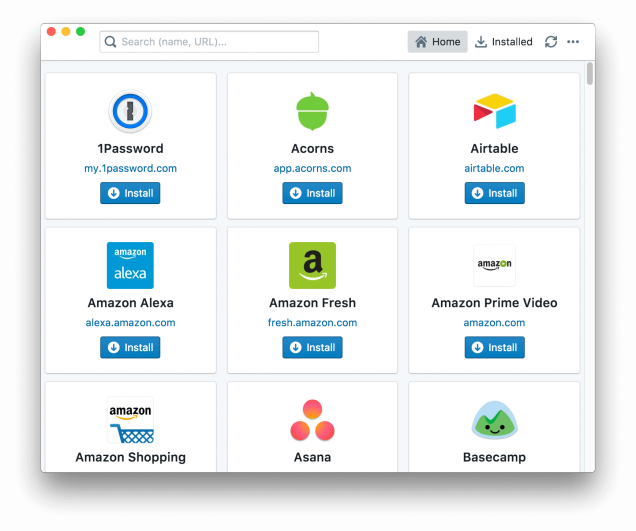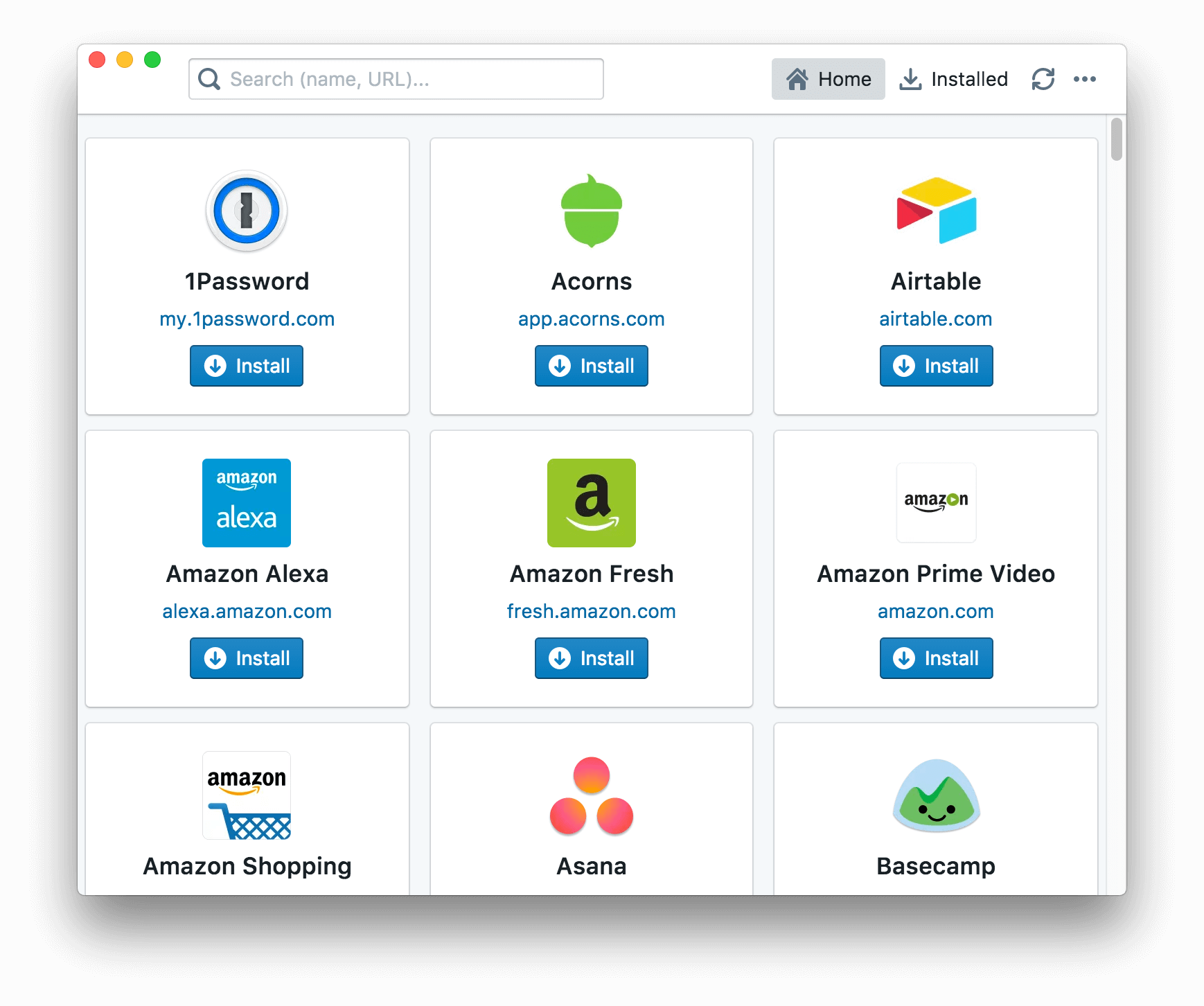If you use different online services, or you usually use web app through your browser (as indeed it should have to be done) and you have thought at least one time: “it would be nice if this were a real app“, well actually there is a solution. And you don’t have to turn to Nativefier.
It’s called WebCatalog and is a free, open source, cross-platform app that allows you to install on your computer those web apps you use most frequently. Would you rather have on your Taskbar or on your Dock the Amazon Prime Video icon to launch whenever you want to see a movie? Install WebCatalog and log in to Amazon from the list of apps available. Are you tired of browse Instagram from your phone? Installed its version for WebCatalog.
Basically, WebCatalog mimics a browser instance (in this case Chromium, the open source version of Google Chrome, based on WebKit). This way you can avoid log on to the service while online, lightening your browser processes workload. The services that you can access are a lot: Netflix, Mint, Medium, Overcast, Soundcloud, Amazon Music, Prime Video, and many others. For some we don’t understand why you should use WebCatalog instead of the officially dedicated app (for example Evernote, Basecamp, Hemingway, Spotify); for other, the convenience is clear.
The fact that it is open source and available to all on Git makes WebCatalog relatively safe – we don’t expect the developer to jeopardize the accounts of its users. If you want to try, you can download it from this link.



OK, I am interested in this concept, but don’t really grasp the advantages or disadvantages of the concept. Would love to see the benefits and pitfalls to understand the purpose of this more clearly. As I see this currently… you can use on cross platforms (your android, and Windows) in my instance. Correct? So this is an advantage. What I think, is the cloud storage information…pictures, videos, documents etc… is not the best way to go for longevity in retaining your data. Why, if you die, quit paying for the storage, your data is lost, and eventually destroyed by the service app vendor…(Google Photos; Microsoft OneDrive) This is not good business for the consumer, and people who have no idea how to retrieve the data from the cloud. Sure, it’s nice to load your data to the cloud for quick retrieval via pc or phone… but when you attempt to download the vast accumulation of your data in the cloud, it takes forever, or the original data is compressed into zip files. That is not a great transition/transfer for myself. I may be going off the page of your intentions of this application, but there must be a better way to retain data. How could I use it for my purposes. Eg.: I have over 100k of video and pictures on google photos. What method would you recommend to retain the data free and still have the conveinence of the cloud concept to instant access anywhere the exact same data. My idea is: creat an app that would automatically back up your data from phone, camera, to the cloud and an external drive you retain yourself. This makes sense to me.